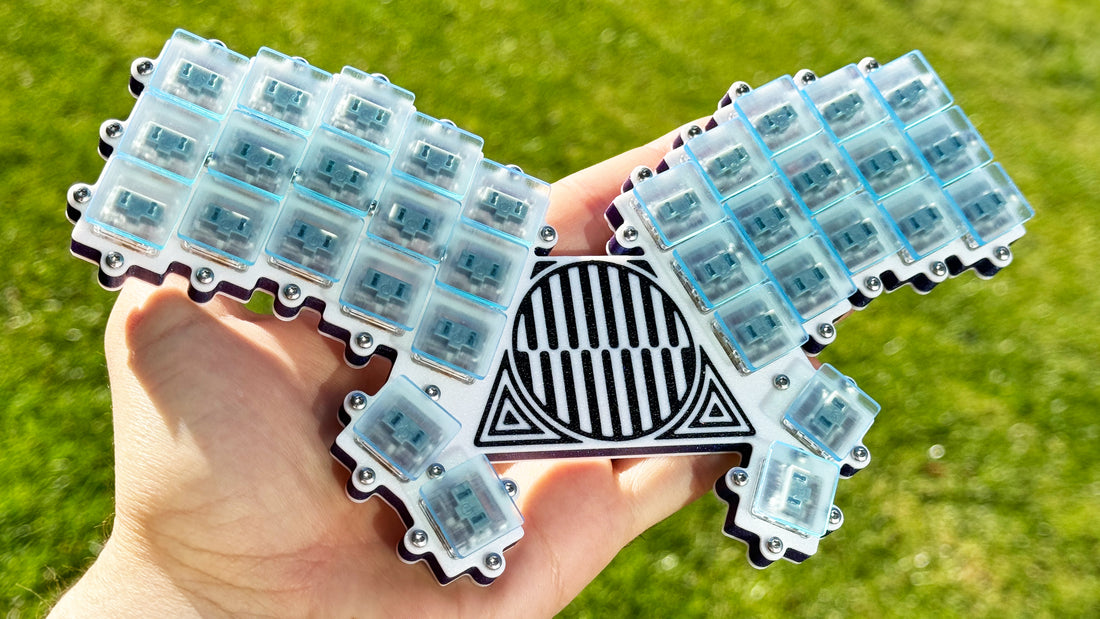Getting One
If you’re interested in getting one assembled, contact me and we can discuss the components and other details for a commissioned build. However, the files are available for free here if you want to build one yourself.
In addition to the 3D printed case, heat shink tubing, wire, and copper, you'll also need tools along with the following components:
- 1 RP2040 Zero or Arduino Pro Micro
- 34/40 1N4148 diodes
- 48 M2x6mm standoffs
- 96 M2x4mm screws
- 1 Pin-Socket Headers (If using RP2040 Zero)
- 34/40 Choc switches
- 34/40 1u keycaps
Wiring

When looking at the back of the board, the columns (blue) go to the following pins on the controller from right to left: GP29, GP28, GP27, GP26, GP15, GP7, GP6, GP5, GP4, GP3
Then the rows (red) go from top to bottom: GP9, GP10, GP11, GP12
If building the 3x6 variant, connect GP14 (before GP29) and GP8 (after GP3) for the extra columns.
Keep in mind, you can connect anywhere on the column or row to the controller, it doesn't need to just be at the end.
Firmware
You can find the firmware files on the qmk_firmware repository or you can compile them online using the QMK Configurator. However, QMK is often slow at getting changes merged and because of that you can find the most up-to-date firmware on the ScottoKeebs Github repository. Also available are the pre-compiled firmware files that are ready to flash:
default.uf2 - Default QMK keymap in QWERTY.
vial.uf2 - Default QMK keymap in QWERTY with Vial configurator support.
scotto.uf2 - My personal QMK keymap in Colemak.
After flashing vial.uf2, you should load the vial.vil configuration file within the Vial application to ensure everything functions as expected.
Video
Photos







6 comments
Hey I need a little bit of help.
I print and build everything but cant fit any keycaps, not even the glass ones that you have on github.
What I have done wrong?
Thanks in advance
Sick board. I just got done building the 5 column handwired version. I love your youtube vids and build guides. So thorough! Keep it up man
Sick board. I just got done building the 5 column handwired version. I love your youtube vids and build guides. So thorough! Keep it up man
I just built the hand wired 6 column version. My first DIY keyboard. It worked first try. Umm how to switch layers. Never had layered keyboards like this.
Great design idea, thanks! I have built one using Choc v2 switches which have an MX stem. Important note to anyone building: check the size of the keycaps versus the switch spacing. Standard or low profile MX caps at 18.3×18.3mm will not fit.